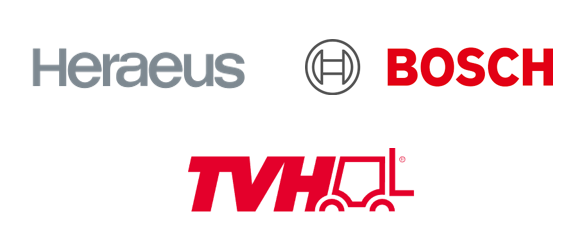Market Overview:
"The global automotive control arms market was valued at US$ 8.8 Billion in 2024 and is expected to register a CAGR of 4.2% over the forecast period and reach US$ 12.7 Billion in 2033."
|
Report Attributes |
Details |
|
Base Year |
2024 |
|
Forecast Years |
2025-2033 |
|
Historical Years |
2021-2023 |
|
Automotive Control Arms Market Growth Rate (2025-2033) |
4.2% |
The global automotive control arms market has been registering robust revenue growth in recent years. Other key factors such as increasing production of vehicles, advancements in automotive technology, and growing demand for comfort and safety features in automobiles are driving revenue growth of the market. The market analysis reveals that the demand for control arms is also being supported by rising consumer preference for vehicles with enhanced suspension systems, improved handling, and reduced Noise, Vibration, And Harshness (NVH) levels. In addition, rising focus on lightweight materials and enhancing fuel efficiency is leading to steady adoption of lightweight control arms and other parts and components made from materials like aluminum and composites.
An automotive control arm is a crucial component of the suspension system that connects the chassis of a vehicle to the wheel hub, allowing for controlled movement and stability. It is used in various types of vehicles, including cars, trucks, and SUVs. Control arms are typically made of sturdy materials such as steel or aluminum to withstand the stress and impact encountered on roads and from contact with rough and bumpy terrain.
Demand for control arms is primarily driven by factors such as increasing vehicle production, regular travel over rough terrain and uneven road conditions, and consumer preference for enhanced ride comfort and handling. Also, advancements in materials and manufacturing techniques contribute significantly to rising preference for lightweight and durable control arm designs.
Automotive Control Arms Market Trends & Drivers:
Increasing Vehicle Production: The global automotive control arms market is positively influenced by rising vehicle production volumes worldwide. The rising demand for automobiles, particularly in emerging economies, is driving the need for control arms to support suspension systems and enhance vehicle performance.
Technological Advancements: Advancements in automotive technology have led to the development of advanced control arm designs and materials. Manufacturers are incorporating innovative features such as adjustable control arms, lightweight materials, and improved durability, which are driving market growth and attracting consumer attention.
Growing Demand for Comfort and Safety: Consumer preferences for comfortable and safe driving experiences have increased the demand for advanced suspension systems. Control arms play a crucial role in ensuring smooth rides, minimizing vibrations, and enhancing vehicle stability, thereby contributing to the market's growth.
Shifting Focus towards Lightweight Materials: The automotive industry is increasingly focusing on weight reduction to improve fuel efficiency and reduce emissions. Lightweight control arms made from materials like aluminum and composites are gaining popularity as they offer reduced weight without compromising strength and performance, leading to market growth.
Stringent Regulations and Standards: Government regulations and safety standards mandating improved vehicle performance and safety features have a significant impact on the automotive control arms market. Compliance with these regulations drives the adoption of technologically advanced control arms, contributing to market growth.
Automotive Control Arms Market Restraining Factors:
High Cost of Advanced Control Arms: The adoption of advanced control arms with innovative features and lightweight materials can significantly increase the cost of production. This can pose a challenge for price-sensitive consumers and limit market growth, particularly in cost-sensitive regions or markets with a high demand for budget vehicles.
Limited Aftermarket Presence: Control arms are primarily sold through OEM channels, and the aftermarket presence is relatively limited. This can restrict the availability of control arms for vehicle repairs and replacements, affecting the overall market growth potential.
Complexity of Control Arm Replacement: Control arm replacement often requires specialized knowledge and equipment, which can limit the accessibility of repairs and replacements. This complexity can discourage vehicle owners from opting for control arm replacements, negatively impacting the market.
Compatibility Issues and Fitment Challenges: Control arms need to be specifically designed and manufactured to fit different vehicle models and configurations. Compatibility issues and fitment challenges can arise when installing control arms, leading to delays and additional costs for vehicle owners, which can hinder market growth.
Automotive Control Arms Market Opportunities:
Increasing Demand for Electric Vehicles: The growing market for electric vehicles presents a significant opportunity for the automotive control arm market. As electric vehicles become more popular, the demand for lightweight and durable control arms that optimize energy efficiency and enhance vehicle performance will increase.
Advancements in Material Technologies: Technological advancements in materials, such as the use of lightweight alloys and composites, offer opportunities for the automotive control arm market. These advanced materials can improve the strength-to-weight ratio of control arms, leading to enhanced vehicle dynamics and fuel efficiency.
Focus on Vehicle Safety and Comfort: Vehicle manufacturers are increasingly prioritizing safety and comfort features in their offerings. This presents an opportunity for control arm manufacturers to develop innovative solutions that enhance vehicle stability, improve handling, and provide a smoother ride experience.
Growing Aftermarket Demand: The aftermarket segment for automotive control arms is expanding due to the aging vehicle fleet and the need for repairs and replacements. This presents revenue streams for manufacturers and suppliers to cater to the aftermarket demand, providing a wide range of control arm options for vehicle owners.
Expansion in Emerging Markets: The automotive industry is witnessing significant growth in emerging markets, such as China, India, and Southeast Asian countries. The increasing vehicle production and rising disposable income in these regions create opportunities for control arm manufacturers to tap into these markets and expand their customer base.
Automotive Control Arms Market Segmentation:
By Material Type:
- Steel Control Arms
- Aluminum Control Arms
- Others
By Vehicle Type:
- Passenger Cars
- Light Commercial Vehicles (LCVs)
- Heavy Commercial Vehicles (HCVs)
By Sales Channel:
- Original Equipment Manufacturer (OEM)
- Aftermarket
By Application:
- Front Suspension Control Arms
- Rear Suspension Control Arms
By Technology:
- Conventional Control Arms
- Advanced Control Arms
Automotive Control Arms Market, By Region:
North America
- United States
- Canada
Europe
- Germany
- The U.K.
- France
- Spain
- Italy
- Russia
- Poland
- BENELUX
- NORDIC
- Rest of Europe
Asia Pacific
- China
- India
- Japan
- Australia & New Zealand
- ASEAN
- Rest of Asia Pacific
Latin America
- Brazil
- Mexico
- Argentina
- Rest of Latin America
Middle East & Africa
- Saudi Arabia
- South Africa
- United Arab Emirates
- Israel
The automotive control arms market in North America is driven by the high demand for passenger vehicles and commercial vehicles in countries like the United States and Canada. The region has a well-established automotive industry and a strong focus on vehicle safety and performance. Consumer preference leans towards vehicles with advanced suspension systems, leading to a higher demand for control arms. The presence of major automobile manufacturers and a developed aftermarket further contributes to the market growth in this region.
Europe is a significant market for automotive control arms due to the presence of prominent automobile manufacturers and the high demand for luxury and premium vehicles. Countries like Germany, France, and the United Kingdom are key contributors to the market growth. Stringent safety regulations and consumer preference for vehicles with superior handling and ride comfort drive the demand for high-quality control arms. The region also has a well-established supply chain and a growing aftermarket sector, supporting the overall industry growth.
The Asia Pacific region is the largest market for automotive control arms, driven by the booming automotive industry in countries like China, Japan, and India. The increasing production and sales of passenger vehicles and commercial vehicles, coupled with the rising disposable income of consumers, contribute to the demand for control arms. Consumer preference in this region focuses on cost-effective vehicles with reliable suspension systems. The region also benefits from a strong supply chain and the presence of major automotive control arm manufacturers.
Leading Companies in Automotive Control Arms Market & Competitive Landscape:
The automotive control arm market has a competitive landscape with several key players vying for market share. These companies focus on product innovation, technological advancements, and strategic collaborations to gain a competitive edge. These companies have a wide product portfolio and a strong global presence. They actively engage in research and development activities to develop advanced control arm solutions that meet the evolving demands of the automotive industry. Additionally, mergers, acquisitions, and partnerships are common strategies adopted by these companies to expand their market reach and enhance their product offerings.
Company List:
- ZF Friedrichshafen AG
- Thyssenkrupp AG
- Magna International Inc.
- Mubea Fahrwerksfedern GmbH
- CTEK Corporation
- American Axle & Manufacturing Holdings, Inc.
- Delphi Automotive PLC
- Robert Bosch GmbH
- TRW Automotive Holdings Corp.
- Dana Holding Corporation
- Mando Corporation
- Hitachi Automotive Systems, Ltd.
- GKN plc
- Hyundai Mobis Co., Ltd.
- Tenneco Inc.
Research Scope
|
Report Metric |
Report Details |
|
Automotive Control Arms Market size available for the years |
2021-2033 |
|
Base Year |
2024 |
|
Forecast Period |
2025-2033 |
|
Compound Annual Growth Rate (CAGR) |
4.2% |
|
Segment Covered |
By Material Type, Vehicle Type, Sales Channel, Application, Technology, and Region |
|
Regions Covered |
North America: The U.S. & Canada Latin America: Brazil, Mexico, Argentina, & Rest of Latin America Asia Pacific: China, India, Japan, Australia & New Zealand, ASEAN, & Rest of Asia Pacific Europe: Germany, The U.K., France, Spain, Italy, Russia, Poland, BENELUX, NORDIC, & Rest of Europe The Middle East & Africa: Saudi Arabia, United Arab Emirates, South Africa, Egypt, Israel, and Rest of MEA |
|
Fastest Growing Country in Europe |
Germany |
|
Largest Market |
Asia Pacific |
|
Key Players |
ZF Friedrichshafen AG, Thyssenkrupp AG, Magna International Inc., Mubea Fahrwerksfedern GmbH, CTEK Corporation, American Axle & Manufacturing Holdings, Inc., Delphi Automotive PLC, Robert Bosch GmbH, TRW Automotive Holdings Corp., Dana Holding Corporation, Mando Corporation, Hitachi Automotive Systems, Ltd., GKN plc, Hyundai Mobis Co., Ltd. and Tenneco Inc. amongst others. |
Frequently Asked Question
What is the size of the global automotive control arm market in 2024?
The global automotive control arm market size reached US$ 8.8 billion in 2024.
At what CAGR will the global automotive control arm market expand?
The global automotive control arm market is expected to register a 4.2% CAGR through 2025-2033.
How big can the global automotive control arm market be by 2033?
The market is estimated to reach US$ 12.7 billion by 2033.
How is the global automotive control arm market report segmented?
The global automotive control arm market report segmentation is based on material type, vehicle type, sales channel, application, technology, and region.
Who are the key players in the global automotive control arm market report?
Key players in the global automotive control arm market report include ZF Friedrichshafen AG, Thyssenkrupp AG, Magna International Inc., Mubea Fahrwerksfedern GmbH, CTEK Corporation, American Axle & Manufacturing Holdings, Inc., Delphi Automotive PLC, Robert Bosch GmbH, TRW Automotive Holdings Corp., Dana Holding Corporation, Mando Corporation, Hitachi Automotive Systems, Ltd., GKN plc, Hyundai Mobis Co., Ltd. and Tenneco Inc., amongst others.

